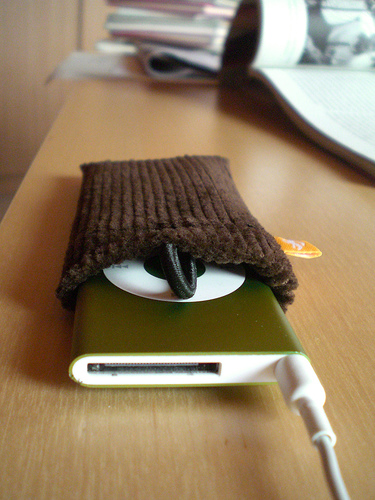It started with the gramophone, back in the early 1800’s. That was the time when first had the opportunity to listen back to music without needing a repeat live-performance. From this moment onwards the drive to refine, improve and simplify the way we listen to recorded music has been relentless and constant. In the spirit of reflection let’s take a look at the remarkable journey of innovation that started at the beginning of playback to where we are now, and celebrate the technological milestones we’ve passed along the way!

Concerts and Gramophones
It wasn’t until 1887 that we had the ability to playback what we wanted to listen to. Up until then you had to head out and hear a song or piece performed live, and that was the only way you could listen to music. The development brought on by Thomas Edison’s 1887 invention of the phonograph changed all that. From that moment onward, people could replay a tune over and over using a stylus, a trumpet like tube and a rotating disc. The gramophone was a similar device sold by a rival company, proving that even in the earliest stages of music there was a commercial, consumerist element to technology.
Vinyl
The Gramophone and Phonograph reigned supreme as the cutting edge in musical technology until they were undone by the invention of the vinyl record play in 1948. With a sharper pin, easier rewind or playback features and exclusive use of gramophone records (rather than phonographic cylinders), the vinyl record player pumped out comparatively crisp music for decades after its release, and is still highly popular today among some niche groups who claim that the sound quality is still clearer than anything else.
Cassette Player
From Vinyl, the next great leap forward in music technology was the arrival of the cassette player in 1962. Although there had been experiments with recording sounds on magnetic tape as far back as the 1930’s, it wasn’t until the 1960’s that this medium really took off. The great thing about cassette tapes was that, in contrast with vinyl record players, they were much easier to rewind.
Better yet, with the invention of the cassette tape player and boom-box in the following decades, it become possible to record segments of songs or even whole songs from the radio. This lead to the creation of personalized ‘mix tapes’ comprising of recorded favourites. In fact, creating mix tapes to play at house parties and other events is something that many generation X’ers will remember fondly.
Discman and Walkman
The arrival of the Compact Disk followed in the 1980’s with the introduction of the Discman; a relatively large and clunky portable device that played music using CD’s. The design of the Discman became increasingly smaller and eventually the next generation of CD playing products was rebranded and known as a Walkman. The best thing about the Discman at the time, and to a larger extent the Walkman, was how portable it was compared to some of the unwieldy cassette playing devices. They even allowed you to listen to music while exercising, even though the CD would skip from time to time!
MP3’s and Mobile Phones
2001 lead the next major leap forward when the digital transfer of music began to overtake the popularity of CD’s. From then on it has been a one-way slide with digitized music being the overwhelmingly dominant type of music listened to. MP3 players came along in the late 1990’s, but it was the iPod that really popularized listening to music digitally. Since then a wide range of MP3 players have been released by companies all across the world.
As MP3’s became increasing popular, mobile phones began including MP3 capabilities, making way for smart phones like the iPhone which incorporates the full function of an iPod with a phone. Just think of what will lead next!
Featured images:
License: Creative Commons
image source
Michael Brigond is a Music Student at the Australian Institute of Music who wanted to reminisce the journey that music listeners have taken so far. He plans to keep up to date with the latest technology by getting a loan from Flexirent at just the right time!



























No Comments
Leave a comment Cancel